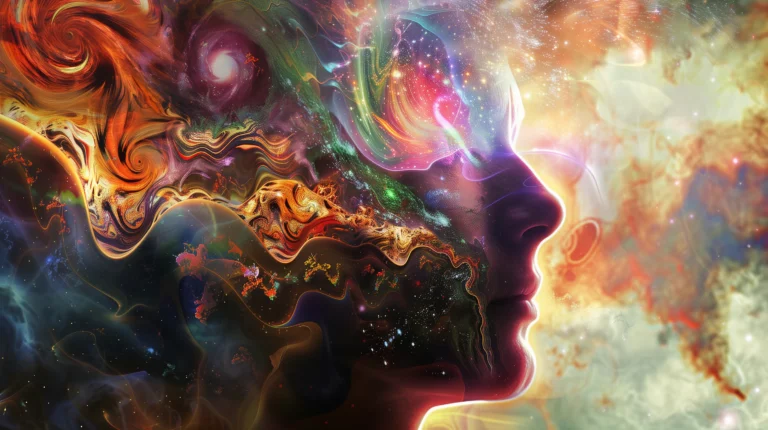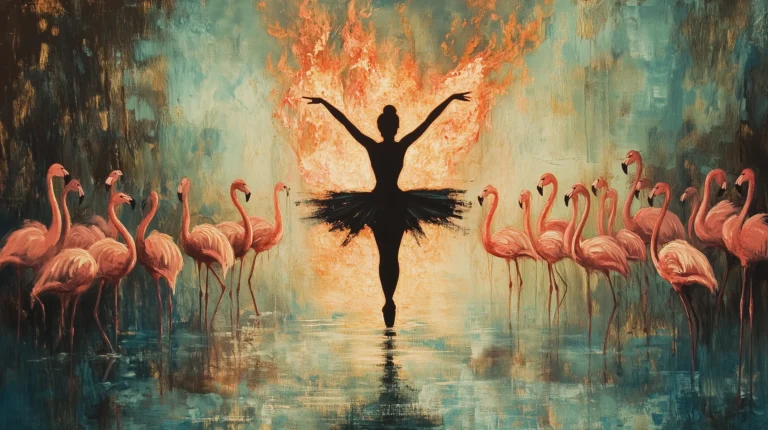Action and Gratitude
Table of Contents
Chapter 1: Introduction
Chapter 2: The Power of Action
- Why Activity is More Than Just Motion
- The Ripple Effect
Chapter 3: Gratitude as a Lifeline
- Beyond ‘Thank You’
- The Feedback Loop
Chapter 4: Balancing Effort with Reflection
- Action without Gratitude
- Gratitude without Action
Chapter 5: The Real-World Benefits
- Improved Mental Well-being
- Strengthened Resilience
Chapter 6: Conclusion
Chapter 1:
Introduction
In the annals of human understanding, across continents and eras, there have been consistent forces guiding our quest for a purposeful and fulfilling life. Two such forces, acting as both anchors and sails in our journey, are action and gratitude. This book seeks to unfurl the tapestry where these dual aspects intertwine, illuminating the path for those seeking equilibrium between outward ambition and inner contentment.
Philosophy has long mused upon the human propensity for action. Aristotle, the ancient Greek philosopher, once remarked,
“We are what we repeatedly do. Excellence, then, is not an act but a habit.”
It is this very act of ‘doing’ that forms a significant part of our identity. Yet, as Marcus Aurelius, the Stoic emperor-philosopher, insightfully stated,
“The impediment to action advances action. What stands in the way becomes the way.”
His wisdom encourages us to see beyond the act itself, highlighting the importance of internal reflection and gratitude for even the adversities we face.
Psychology brings a more empirical lens to this discourse, merging introspective insights with experimental findings. As the realm of positive psychology burgeons, researchers like Dr. Martin Seligman have highlighted the profound impact of gratitude on mental well-being. The ‘Hedonic Treadmill’ theory is an exemplar, suggesting our constant need for more can often overshadow the present. It is thus gratitude that offers a way off this treadmill, allowing for a pause, a reflection, a moment of true contentment.
As Viktor Frankl, a psychiatrist and Holocaust survivor, profoundly noted,
“Everything can be taken from a man but one thing: the last of the human freedoms—to choose one’s attitude in any given set of circumstances, to choose one’s own way.”
Often, it’s gratitude that shapes this choice, providing a sense of meaning even in profound adversity.
Moving beyond the tangible, the world of Esotericism presents a more ethereal perspective. Here, gratitude is not just a thought or emotion but a gateway to deeper spiritual understanding. The Hermetic principle of
“As within, so without”
provides an eloquent framework, suggesting that our internal states of gratitude can manifest harmonious external realities. Kabbalistic teachings, with their intricate tapestry of symbolism and metaphysics, emphasize how gratitude during challenges can reveal concealed divine wisdom.
This book is an odyssey—through philosophy’s ruminations, psychology’s revelations, and esotericism’s illuminations. It’s an invitation to the reader to explore the dual realms of ‘doing’ and ‘thanking’, to understand that action without gratitude can lead to a hollow existence, while gratitude without action might leave one’s potential unfulfilled.
To quote Rumi, the 13th-century Sufi mystic,
“Let yourself be silently drawn by the strange pull of what you really love. It will not lead you astray.”
Let this be a guide, drawing you towards a life where action meets gratitude, and where everyday moments transform into profound epiphanies.
Embark on a journey where ancient wisdom intertwines with modern insights, and where profound mysticism resonates with age-old esoteric principles. As you navigate this path, uncover the potent synergy of “doing” and “thanking,” twin forces that shape lives of purpose, resilience, and deep joy.
Chapter 2:
The Power of Action
In a world inundated with distractions, from endless digital notifications to overwhelming choices in every domain, there’s an underlying, often unspoken question: Why act? The potency of action, particularly purposeful action, has been deliberated and celebrated across philosophy, psychology, and esoteric teachings. The consensus? Taking action is not only a tool for change but a cornerstone for personal development and societal evolution. Albert Einstein, a luminary in the realm of physics, astutely observed,
“In the middle of difficulty lies opportunity.”
Why Activity is More Than Just Motion
At first glance, any form of activity might seem beneficial – after all, motion suggests progress. However, not all movements lead us forward. In fact, some can lead us in circles, or worse, backward. To truly harness the power of action, one needs direction and intent.
Aristotle once mused,
“We are what we repeatedly do. Excellence, then, is not an act, but a habit.”
Here, the great philosopher wasn’t merely alluding to the act of doing but the intent and purpose behind it. It’s the difference between aimlessly wandering and journeying toward a clear destination.
Psychologically, purposeful action taps into the intrinsic motivations that drive humans. Daniel Pink, in his exploration of what truly motivates us in “Drive”, talks about autonomy, mastery, and purpose as the trinity of true motivation. Activity, when tied to a deep-seated purpose, becomes more than just a routine; it transforms into a mission, offering a profound sense of fulfillment and drive.
Esoteric teachings, like those in Zen Buddhism, emphasize “mindful action.” Instead of getting lost in the maze of life’s activities, one is encouraged to be completely present in every action, making even the mundane sacred. The timeless wisdom of Zen teachings advises,
“When walking, walk. When eating, eat.”
The Ripple Effect
Every act, no matter how small, can set off a series of reactions, like a stone creating ripples across the surface of a pond. This idea is deeply rooted in both the lore of ancient wisdom and the principles of modern psychology.
The Chinese philosopher Laozi famously said,
“A journey of a thousand miles begins with a single step.”
On the surface, this speaks to the idea that even monumental tasks start with a singular, often small, action. But diving deeper, it also suggests the transformative power of that first step and how it can set a precedent for all steps that follow.
From a psychological perspective, the concept of “behavioral activation” in cognitive therapy addresses the power of action. By breaking down daunting tasks into manageable steps and celebrating each accomplishment, one can combat feelings of overwhelm and inertia. This creates a positive feedback loop, where one action fuels the confidence and motivation for the next.
Esotericism refers to a collection of teachings or practices that delve into the inner, spiritual dimensions of life, standing in contrast to the more publicly available or external teachings. A cornerstone of these teachings, particularly in Hermeticism—a spiritual and philosophical tradition rooted in the insights attributed to Hermes Trismegistus—is the axiom
“As above, so below.”
This principle suggests a profound interconnectedness of all things, indicating that there’s a correspondence between the macrocosm, the larger universe, and the microcosm, the individual. In essence, it proposes that events or dynamics at one level of reality, such as the spiritual, find a mirror in another, like the physical.
This perspective brings forth a fascinating implication: even seemingly small or insignificant actions taken in our physical, tangible world can resonate in vast, profound ways. Given the universe’s interconnected web, as proposed by the Hermetic principle, a simple ripple in the material realm can cascade into transformative waves in the spiritual sphere.
Through this lens, every action, no matter how minute, assumes a gravity and significance, highlighting that our day-to-day choices and acts are deeply intertwined with broader spiritual and universal consequences. Such a viewpoint not only lends a sense of sacredness to our daily deeds but also emphasizes the inherent responsibility and potential in each step we take.
In conclusion, action, especially when driven by purpose, possesses a transformative power that transcends mere movement. By understanding this, we can channel our energies more effectively, creating ripples of positive change in our lives and, by extension, in the world around us.
Chapter 3:
Gratitude as a Lifeline
Gratitude, in its purest form, serves as a compass that guides us through life’s meandering paths, highlighting the silver linings even in the darkest clouds. Recognized across diverse disciplines—philosophy, psychology, and esoteric studies—gratitude is not just an emotional state, but a transformative force that shapes our perceptions, decisions, and actions.
Reflecting on the transformative power of gratitude, Melody Beattie beautifully articulates,
“Gratitude unlocks the fullness of life. It turns what we have into enough, and more. It turns denial into acceptance, chaos to order, confusion to clarity. It can turn a meal into a feast, a house into a home, a stranger into a friend.”
Beyond ‘Thank You’
While the words “thank you” are the usual linguistic carriers of gratitude, the emotion itself delves much deeper. It’s an acknowledgment of interdependence, an acceptance of life’s gifts, and a celebration of the moment.
Cicero, the renowned Roman statesman and philosopher, once declared,
“Gratitude is not only the greatest of virtues but the parent of all others.”
His statement illuminates the foundational role gratitude plays in virtuous living, suggesting that appreciation serves as the cornerstone from which other virtues sprout.
In the realm of psychology, the benefits of gratitude are manifold. Numerous studies have indicated that a regular practice of gratitude improves mental health, increases resilience, and enhances overall life satisfaction. Dr. Robert Emmons, one of the leading scientific experts on gratitude, posits that recognizing the sources of goodness outside oneself and acknowledging them, significantly impacts one’s emotional well-being. Highlighting the profound impact of gratitude on our well-being, Dr. Robert Emmons states,
“The practice of gratitude can have dramatic and lasting effects in a person’s life. It can lower blood pressure, improve immune function and facilitate more efficient sleep. Gratitude reduces lifetime risk for depression, anxiety, and substance abuse disorders, and is a key resiliency factor in the prevention of suicide.”
Esoterically, many traditions emphasize gratitude as a form of grounding, a way to connect to the universe, and an acceptance of the ebb and flow of life. The Kabbalistic practice, for instance, teaches the importance of being thankful for life’s blessings, no matter how minor they seem, as a way to align with divine energy. Albert Schweitzer, emphasizing the profound connection between self-awareness and gratitude, remarked,
“He who does not reflect his life back to God in gratitude does not know himself.”
The Feedback Loop
Gratitude isn’t just a passive acknowledgment of life’s gifts; it’s a catalyst for further action. When one is deeply appreciative, they’re compelled to give back, creating a virtuous cycle.
The Stoic philosopher Seneca stated,
“He who receives a benefit with gratitude repays the first installment on his debt.”
This acknowledges the cyclical nature of gratitude and action. By recognizing and appreciating the kindness one has received, there arises an intrinsic motivation to reciprocate, to act.
From a psychological perspective, gratitude can be seen as an “upward spiral”. Positive emotions like gratitude can initiate positive actions, which in turn generate more positive emotions. Barbara Fredrickson’s “Broaden-and-Build” theory of positive emotions illustrates how such feelings, including gratitude, expand one’s awareness and encourage novel, varied, and exploratory thoughts and actions. This not only builds skills and resources but also leads to more opportunities to feel gratitude. Barbara Fredrickson, a leading researcher in positive psychology, aptly noted,
“Positive emotions are not merely the frosting on the cake of life. They are a profound building block of that cake.”
Esoteric teachings across various traditions underscore the profound interconnectedness of all things. In this cosmic tapestry, every thread is intertwined, and every individual is but a strand in the grander weave. Recognizing one’s role in this vast network naturally evokes a sense of gratitude.
This deep appreciation for the interconnectedness of existence then catalyzes actions that reverberate through the system. As one acts with gratitude and awareness, it creates a feedback loop where every positive action further reinforces gratitude, and every moment of gratitude inspires even more harmonious actions. This cycle continuously nurtures and supports the intricate balance and unity of the vast web of existence.
Rumi, the renowned 13th-century Persian poet, and Sufi mystic, often touched upon themes of interconnectedness, love, and gratitude in his poetry. One of his quotes that echoes the sentiment of interconnectedness and the broader tapestry of existence is:
“You are not a drop in the ocean. You are the entire ocean in a drop.”
In sum, gratitude is a beacon, illuminating the beauty in every experience and driving us to engage more profoundly with the world. When we move beyond the mere utterance of thanks and delve into the deeper realms of gratitude, we find a powerful force, not just for personal growth but for societal evolution.
Chapter 4:
Balancing Effort with Reflection
As we journey through the tapestry of life, we often find ourselves walking a tightrope between action and reflection, between doing and thanking. While both aspects hold immense value, their true potential is realized only when they exist in harmony. Philosophy, psychology, and esoteric teachings offer profound insights into this delicate balance.
Action without Gratitude
Being goal-driven and action-oriented is celebrated in many cultures, especially in the fast-paced modern world. However, without the grounding element of gratitude, such pursuits can easily lead to burnout, detachment, and a sense of emptiness.
The philosopher Marcus Tullius Cicero observed,
“Gratitude is not only the greatest of virtues but the parent of all the others.”
Such wisdom underscores the centrality of gratitude. A life solely focused on achievement without pausing to appreciate can harden one’s heart, creating a chasm between the individual and the interconnected world around them.
Psychologically speaking, relentless pursuit without reflection can lead to diminishing returns in happiness. The Hedonic Treadmill theory suggests that people often return to a relative level of happiness, regardless of positive or negative external events. If one doesn’t pause to be grateful, they might find themselves perpetually chasing the next goal without deriving lasting satisfaction.
In the context of Maslow’s observation,
“If the only tool you have is a hammer, you tend to see every problem as a nail.”
Relentless pursuit without gratitude can be likened to continuously wielding a hammer. Action without gratitude essentially implies engaging in ceaseless activities or pursuits without taking a moment to reflect on the journey or appreciate the milestones. This form of unbridled action, while initially seeming productive, often lacks depth and can lead to feelings of emptiness or dissatisfaction.
Gratitude, on the other hand, acts as a balancing force. It’s the moment we pause, reflect, and appreciate the journey and not just the destination. Integrating gratitude with our actions provides depth to our endeavors, ensuring that we’re not just blindly racing towards goals but also soaking in the experiences, lessons, and joys along the way. Without this balance, our actions can resemble the repetitive motion of a hammer, missing the varied and rich tapestry of experiences that life has to offer.
Esoteric traditions like Sufism highlight the dangers of being engrossed solely in the material or active side of life. They emphasize the importance of balance, suggesting that unbridled action without spiritual reflection (or gratitude) can distance one from the divine or the universe’s intrinsic interconnectedness. Rumi, a 13th-century Persian poet and Sufi mystic, has written extensively on the balance between the material and spiritual. Here’s a quote by Rumi that resonates with the sentiment:
“Do not be satisfied with the stories that come before you. Unfold your own myth.”
This quote encourages self-reflection and the forging of one’s own spiritual path. It warns against getting caught up in worldly narratives and emphasizes the importance of seeking a deeper connection with the divine.
Gratitude plays a pivotal role in this journey, serving as a bridge between our earthly experiences and our spiritual aspirations. By cultivating gratitude, we not only appreciate the blessings of the present moment but also align ourselves with the universe, understanding and cherishing our unique place within it.
Gratitude without Action
Conversely, while gratitude is a transformative force, if it remains just a feeling without translating into actions, it might risk becoming passive or even complacent.
The Greek philosopher Diogenes said,
“We have two ears and one tongue so that we would listen more and talk less.”
This emphasizes the importance of active engagement with the world. While gratitude is akin to listening and absorbing, it becomes even more potent when combined with action, or speaking out.
From a psychological standpoint, active gratitude practices, such as acts of kindness or service, can enhance well-being more than just a mental acknowledgment of blessings. Behavioral activation strategies in cognitive therapy demonstrate that engaging in meaningful actions, driven by gratitude or other positive emotions, can combat depressive states.
As Martin Seligman, a pioneer in the field of positive psychology, once noted,
“Doing a kindness produces the single most reliable momentary increase in well-being of any exercise we have tested.”
This observation underscores the essence of behavioral activation strategies. More than just mentally recognizing our blessings, it’s the tangible acts of gratitude – like showing kindness or serving others – that have a profound impact on our psychological state. Such actions not only amplify our feelings of gratitude but also serve as effective antidotes to negative emotional states, including depression.
In esoteric circles, the Law of Attraction teaches that while gratitude can attract positive energy, it’s the combination of gratitude and actionable intent that truly manifests desires. Simply feeling grateful might align one with positive frequencies, but it’s the act of pursuing, grounded in gratitude, that brings dreams to fruition.
Neale Donald Walsch, as quoted in the influential book ‘The Secret,’ wisely observes,
“Gratitude in advance is the most powerful creative force in the universe.”
This affirmation beautifully aligns with esoteric teachings on the Law of Attraction. While gratitude, especially when felt in anticipation, can attract positive energy, it is the union of gratitude with actionable intent that becomes truly transformative. Simply feeling grateful might tune us into positive frequencies, but when gratitude propels action, it paves the way for dreams to fully materialize.
The renowned philosopher Alan Watts once remarked,
“The only way to make sense out of change is to plunge into it, move with it, and join the dance.”
Watts’ words resonate with the idea of actionable intent. While gratitude aligns us with our desires, it’s the act of diving headfirst into the flow of life, guided by gratitude, that truly allows us to ‘join the dance’ and manifest those desires. Embracing change and moving with purposeful intent, grounded in gratitude, is the essence of transformation.
Ultimately, the dance between doing and thanking, between action and gratitude, is a delicate one. To truly lead a life of fulfillment, one must engage with the world with zest and passion, but also pause to reflect, appreciate, and give thanks. This symbiotic relationship between effort and reflection, much like the Yin and Yang, forms the essence of a balanced and meaningful life.
Chapter 5:
The Real-World Benefits
The integration of activity and gratitude is not just a conceptual ideal; it’s a practical strategy with concrete, observable benefits. When the energy of action meets the warmth of gratitude, the results can significantly shape our personal and collective experiences in the world.
Improved Mental Well-being
The human mind is both a marvel and a mystery, with its profound capacity to experience a spectrum of emotions. By actively practicing gratitude in tandem with purposeful action, we can steer our mental health towards optimism, contentment, and clarity.
Plato once declared,
“A grateful mind is a great mind which eventually attracts to itself great things.”
His wisdom underscores the notion that a thankful perspective can fundamentally alter how we perceive and interact with our surroundings, thus attracting positivity.
From the standpoint of psychology, numerous studies support the mental health benefits of gratitude. Dr. Martin Seligman, a pioneer in positive psychology, has identified gratitude as a key factor in improving life satisfaction. When combined with action, such as maintaining a gratitude journal or performing acts of kindness, the effects on mental well-being are amplified. By actively recognizing and acting upon our blessings, we not only acknowledge their existence but also reinforce their impact on our psyche.
Highlighting the profound effects of gratitude, Dr. Martin Seligman, a pioneer in the field of positive psychology, observed,
“Gratitude can make your life happier and more satisfying. When we feel gratitude, we benefit from the pleasant memory of a positive event in our life. Also, when we express our gratitude to others, we strengthen our relationship with them.”
As we contemplate the facets of improved mental well-being, one can’t help but be drawn to the profound insights of the Hermetic tradition, an age-old philosophy that bridges the gap between inner emotions and external realities. This tradition champions the principle:
“As within, so without.”
This axiom serves as a reflection of our mental state’s influence over our external experiences. It postulates that our internal emotional and psychological state has a ripple effect, shaping the reality we encounter daily. Such a perspective isn’t just esoteric in nature; it has direct implications for mental health and well-being. By internalizing feelings of gratitude and positive intent, we condition our minds to not just recognize but also amplify the positive aspects of our external environment. This proactive approach doesn’t merely stop at perception—it extends to molding and influencing the very fabric of our experiences.
From a mental well-being perspective, this Hermetic understanding underscores the therapeutic essence of gratitude. Cultivating gratitude internally doesn’t only offer inner solace. When acted upon, it serves as a catalyst, propelling us toward positive interactions, heightened optimism, and a richer, more fulfilling external life experience.
Incorporating this wisdom reminds us of the profound connection between our mental well-being and the world at large, reinforcing the notion that nurturing our internal state of gratitude has far-reaching consequences for our overall mental health and life satisfaction.
Strengthened Resilience
Life, with all its unpredictability, often presents challenges. The fusion of gratitude with action equips us with a resilience that’s both tender and tenacious, enabling us to navigate life’s storms with grace.
Among the luminaries of ancient wisdom, Marcus Aurelius stands tall with his Stoic teachings, providing invaluable guidance for those seeking resilience in the face of adversity. His assertion,
“The impediment to action advances action. What stands in the way becomes the way,”
This insight, echoing the resilience and adaptability at the heart of Stoicism, is both profound and pertinent for our modern times, reminding us that obstacles can be transformed into opportunities with the right perspective.
At the heart of this statement lies the belief that challenges, rather than hindering us, can actually propel us forward. Instead of viewing obstacles as mere roadblocks, Aurelius urges us to see them as opportunities, as catalysts for growth and transformation. Every impediment, in this light, can be reframed and utilized as a means to advance one’s purpose.
When we integrate this Stoic perspective with the practice of gratitude, a potent synergy emerges. By cultivating gratitude, even amidst trials, we position ourselves to extract wisdom and learning from our adversities. This doesn’t just strengthen our resilience; it fundamentally transforms our relationship with challenges. Instead of dreading or avoiding them, we begin to welcome them, understanding that they offer a unique pathway to growth and deeper understanding.
In essence, Aurelius’s insight teaches us the art of alchemy – transmuting life’s leaden obstacles into golden opportunities, especially when armed with a spirit of gratitude.
Throughout history, there have been individuals who’ve faced unimaginable adversities, yet their spirit remained unbroken. The secret to their mental fortitude often lay in their ability to find meaning even in the direst of circumstances.
Dr. Viktor Frankl, a renowned psychiatrist and Holocaust survivor, once proclaimed,
“Everything can be taken from a man but one thing: the last of the human freedoms—to choose one’s attitude in any given set of circumstances, to choose one’s own way.”
Frankl’s insight, birthed from the horror of Nazi concentration camps, emphasizes the power of perspective and the role of gratitude in shaping that perspective. Even when stripped of everything, he believed that one could still find pockets of meaning, often derived from memories, moments of kindness, or the sheer will to survive. For Frankl, it was gratitude for these moments and memories that provided solace and the strength to persevere.
This understanding reveals a profound truth about human psychology. Our mental well-being isn’t solely determined by our external circumstances, but by how we choose to perceive and respond to them. Gratitude, in this context, acts as a lens, reframing adversity and allowing individuals to extract meaning and purpose from it.
When individuals actively cultivate a sense of gratitude, even for the seemingly trivial or mundane, they lay a foundation for improved mental well-being. It’s not just about passive acknowledgment but about recognizing the transformative power these moments possess. By cherishing and acting upon these realizations, individuals not only enhance their current state of mind but build a reservoir of mental strength, ensuring they are better equipped to face future challenges.
In essence, gratitude’s role in shaping our mental landscape cannot be understated. By grounding ourselves in gratitude and actively seeking meaning, even in adversity, we not only bolster our resilience but enhance our overall sense of well-being.
In the realm of esoteric teachings, gratitude isn’t merely an emotional state or a psychological tool. It’s viewed as a powerful spiritual practice that can illuminate one’s path, especially when faced with challenges. Such teachings often delve deep into the idea that adversity isn’t just a random occurrence but carries profound spiritual significance.
The Kabbalistic tradition offers a poignant perspective on this. It speaks of challenges as “klippot,” which can be envisioned as shells or veils that obscure divine light. These klippot aren’t just arbitrary obstacles but contain hidden wisdom. As the famed Kabbalist, Isaac Luria, once expressed,
“From every descent, one can ascend. For every defect, the remedy is at hand. Everything is ready and waiting.”
This suggests that within every challenge lies an opportunity for spiritual ascent and enlightenment.
Approaching such challenges with gratitude, then, becomes an act of spiritual discernment. It’s about recognizing the concealed divine light within the klippot and valuing the inherent lessons they present. By gratefully acknowledging these lessons and actively engaging with the challenges, individuals can transcend mere worldly resilience. They embark on a journey of spiritual growth, where every obstacle becomes a gateway to deeper wisdom and connection with the divine.
In this esoteric lens, gratitude and resilience intertwine to form a spiritual scaffold, supporting individuals as they navigate life’s myriad trials. Through gratitude, the hidden blessings within challenges are revealed, and with resilience, they’re harnessed to foster spiritual growth and transformation.
To culminate, merging activity with gratitude doesn’t just elevate our spiritual or emotional lives; it significantly enhances our tangible, day-to-day experiences. By interweaving the dynamism of action with the grounding energy of gratitude, we set the stage for a life of enriched mental well-being and fortified resilience.
Chapter 6:
Conclusion
In the vast chronicles of human experience, few things resonate as deeply as the interplay between action and gratitude. These two dimensions, so intricately woven into the fabric of our lives, shape our narratives, mold our choices, and ultimately define our legacies.
John F. Kennedy once said,
“As we express our gratitude, we must never forget that the highest appreciation is not to utter words, but to live by them.”
As we stand at the culmination of this odyssey through the realms of philosophy, psychology, and esotericism, it becomes apparent that mere acknowledgment of gratitude and action’s synergy isn’t enough. To truly honor the wisdom passed down through generations and discerned from diverse traditions, we must embody it, integrating it into our daily lives and actions.
The beauty of gratitude is its vastness. It extends far beyond a fleeting feeling of thankfulness. As William Arthur Ward aptly put it,
“Gratitude can transform common days into thanksgivings, turn routine jobs into joy, and change ordinary opportunities into blessings.”
Yet, it demands its due. Like a garden, it needs nurturing through consistent action, reflection, and intent. Left unattended, the flowers of gratitude wither, leaving behind barren lands of complacency and discontent.
On the other side of the spectrum, action without gratitude’s anchoring might seem fulfilling in its immediate aftermath, but in the grander scheme of life, it often appears as an endless marathon without a finish line. To quote Albert Camus,
“Real generosity towards the future lies in giving all to the present.”
True action, driven by gratitude, isn’t about relentless pursuits but meaningful endeavors grounded in the present moment.
However, let’s not romanticize this journey as one of perpetual sunshine and rainbows. The path of self-growth, where gratitude meets action, is fraught with challenges, ambiguities, and moments of despair. The real work, as many spiritual traditions remind us, is internal, often hidden from the world’s eyes. It’s a dance between light and shadow, effort and surrender, known and unknown. As T.S. Eliot wisely noted,
“We shall not cease from exploration, and the end of all our exploring will be to arrive where we started and know the place for the first time.”
As you close this book, let it not be an end but a beginning—a commencement of a journey where you strive not just for achievements but for meaning, not just for success but for fulfillment. Remember that the dual practices of action and gratitude are akin to two wings of a bird; both are essential for the soaring flight of life.
May you always find the courage to act, the wisdom to be grateful, and the strength to navigate the intricate dance between the two. In the echoing words of Ralph Waldo Emerson,
“The only person you are destined to become is the person you decide to be.”
May this decision be illuminated by gratitude and animated by purposeful action.







